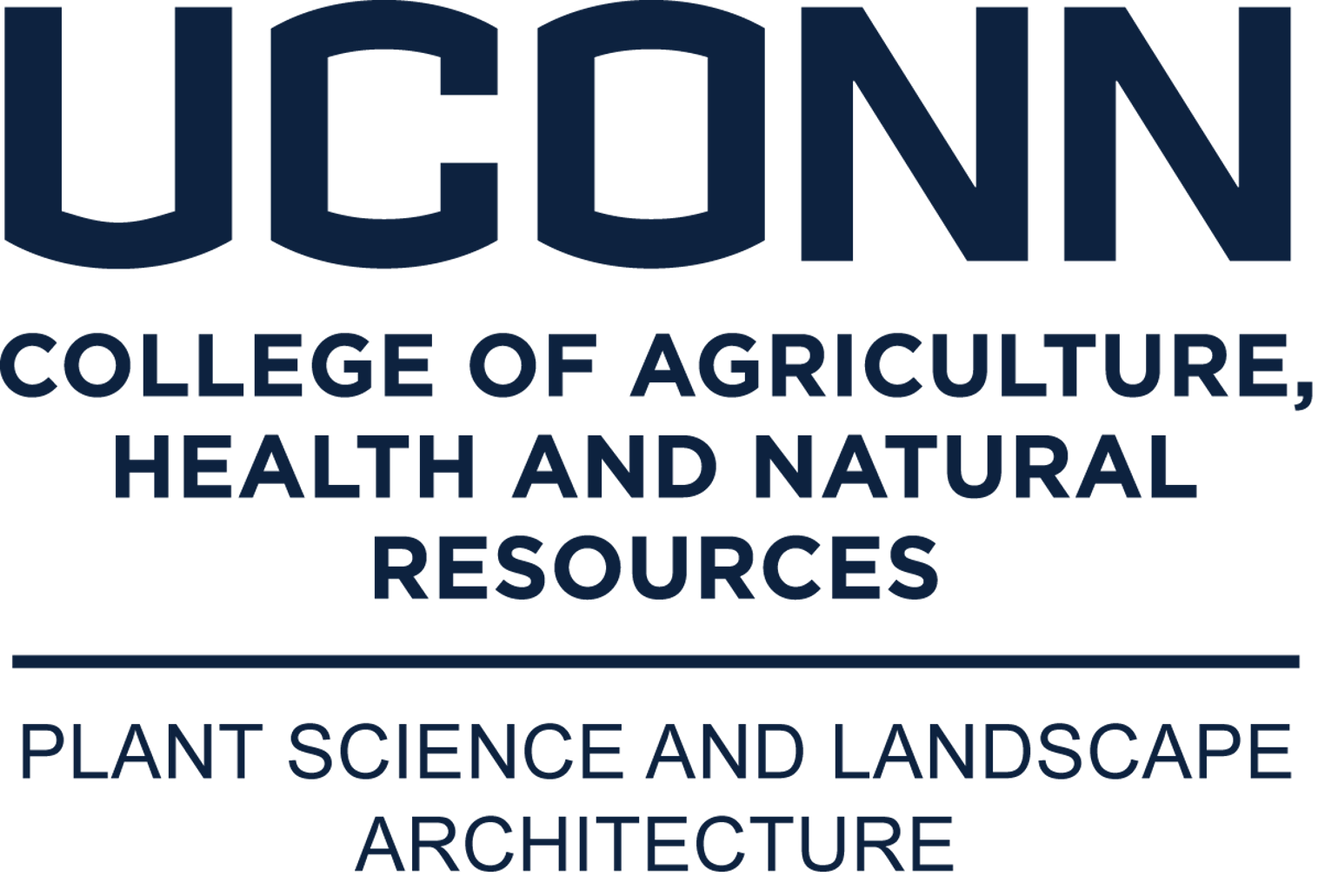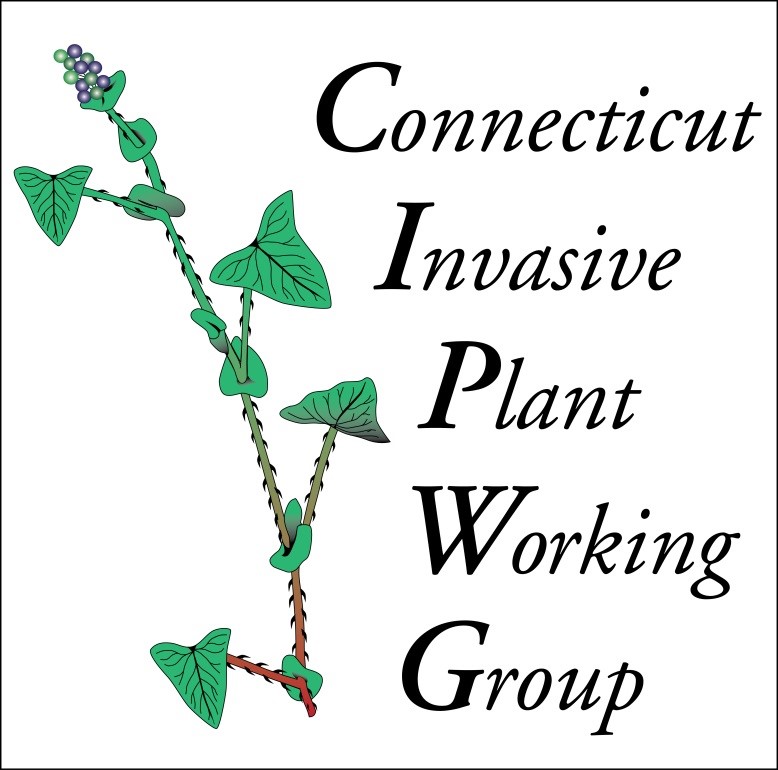Produced by: The Connecticut Department of Energy and Environmental Protection and the University of Connecticut, 2014
For a PDF version of this information, email Alyssa.Siegel-Miles@uconn.edu
Introduction:
Efforts to control invasive plants may generate large amounts of plant material and soil or sediment containing viable parts. This material must be appropriately managed, or it could contribute to the reestablishment and spread of the species at the controlled site, the disposal site or landfill, or elsewhere. In many cases, plants may regrow in future years. It is very important to monitor sites after control efforts to prevent invasive plants from reestablishing and re-invading the area. In general, it is best to control plants early in the season, before they begin to flower. In some cases, fruits and seeds can continue to mature even on plants that have been uprooted, so it is important to check plants for flowers before deciding on a disposal option. It is advisable to leave plants controlled by herbicides in place instead of removing them.
This document focuses on the disposal of invasive plant material after control work takes place and does not include information about invasive plant control. Once control activities have concluded, please use these general guidelines to dispose of invasive plant materials as safely and effectively as possible. Visit the website of the Connecticut Invasive Plant Working Group (cipwg.uconn.edu), use other resources, or ask a gardening or landscape professional for advice and information on controlling invasive plants on your property. Additionally, remember that each situation is unique, and this document is intended only as a basic guide.
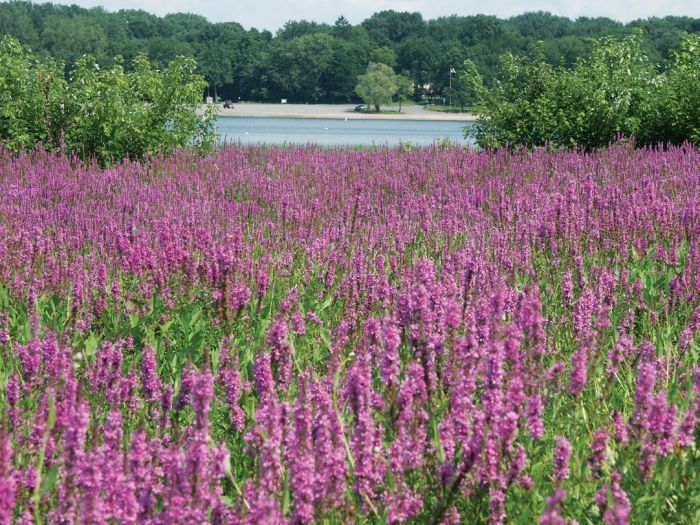
Legal Notes:
While it is illegal to transport material of any species listed under Connecticut General Statute Sec. 22a-381d as an invasive plant, the statute includes an exception for the moving of plant material for the purpose of eradication. Applications of herbicides in aquatic environments require a permit from the Connecticut Department of Energy and Environmental Protection (CT Gen. Stat. Sec. 22a-66z). Applications of herbicides on a property that is not owned by you require a valid pesticide applicator’s license (CGS Sec. 22a-47).
Also, please be aware that it is illegal to transport plant material of any kind (invasive or otherwise) on boats or boat trailers and that boats and boat trailers must be inspected for aquatic plants before being transported (CGS Sec. 15-180). Burning may be conducted through the local Open Burning Official as required by CGS Sec. 22a-174(f), if the town has an open burning program and the local Open Burning Office approves of the proposed burn. Always check the local fire danger and the Air Quality Index before you burn and follow all federal, state, and local laws and ordinances when conducting invasive plant removal or disposal. Special reporting and disposal instructions exist for mile-a-minute vine (Persicaria perfoliata). For information about the appropriate disposal of aquatic invasive plants, please refer to the DEEP guide on aquatic invasive plant disposal available at cipwg.uconn.edu or contact DEEP at 860-424-3589.
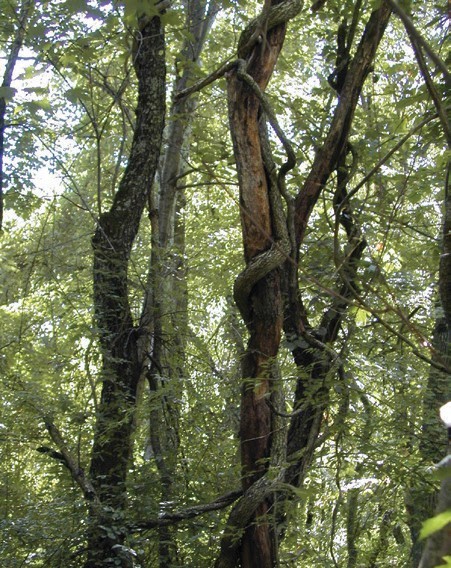
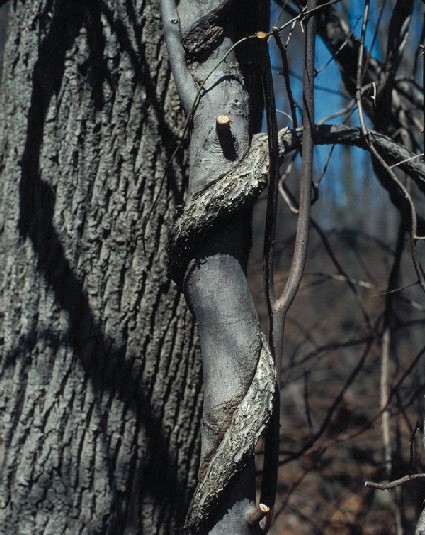
Photos: Asiatic bittersweet, a woody vine, can damage trees as it grows. Photos by Donna Ellis (top) and Les Mehrhoff, IPANE (bottom)
Tree, Shrubs, and Woody Vines:
The best time to dispose of invasive plants is before plants flower and produce seed. After flowers, fruits, or seeds develop, minimize movement of the plants to prevent unnecessary dispersal. Leave plants on site if possible. Do not compost plants that are actively flowering or fruiting and do not bring to a transfer station, compost site, or brush processing site that may compost or mulch the material.
Air dry: Plant development stage. Prior to flowering. Small seedlings can be pulled and left with roots exposed to dry out. This material can be left on site or can be composted once it is fully dead and dried.
Chip and Compost: Plant development stage: Prior to flowering. Chip and use as mulch on site or add to compost once fully dead and dried. If during or after flowering, chip but do not compost. Leave on site and monitor. Do not send to a commercial or municipal compost site.
Construct brush piles: Plant development stage: Prior to flowering. Consider using larger woody plants to construct brush piles for wildlife habitat. Pile all material into a single location. Visit ct.gov/deep (search “Brush Piles”) for information about building brush piles from the Connecticut Department of Energy and Environmental Protection. Make sure all material is fully dead and dried before use. Note: brush piles may create ideal habitat for mice and ticks. Do not construct brush piles near areas of human habitation. If during or after flowering, cover brush pile to prevent spread by birds, etc.
Incinerate: Plant development stage: During or after flowering. Incineration of material may be a viable option if it can be bagged and transported securely to an incinerator. Contact your town to determine if your regular solid waste/trash is incinerated.
Gather material and burn: Plant development stage: During or after flowering. Burn only in accordance with all federal, state, and local laws and ordinances and permits. Monitor weather conditions prior to ignition to avoid hazardous fires. See “Legal Notes” section, above, for more information.
Use as firewood: Plant development stage: During or after flowering. Use as firewood locally. Moving firewood large distances may spread invasive insects. Visit dontmovefirewood.org for more information.
Note on vines: It is generally not necessary and sometimes not possible to dispose of vines that may be caught high in trees or wrapped tightly around tree trunks. If the vine is cut at the base and dies, the plant will gradually break apart and fall out of the tree. Dead and dried fallen fragments may be disposed of as described above.
Additional notes: Plant development stage: Prior to flowering or during or after flowering. Large stumps and branches may require special disposal. Contact your town for more information about appropriate disposal options.
Herbaceous (Non-Woody) Plants
Air dry: Plant development stage: Prior to flowering. Pull and leave with roots exposed to dry out. This material can be left on site or can be composted once it is fully dead and dried.
Construct brush piles: Plant development stage: Prior to flowering or during and after flowering, Pile all material into a single location. Visit ct.gov/deep (search “Brush Piles”) for information about building brush piles from the Connecticut Department of Energy and Environmental Protection. Make sure all material is fully dead and dried before use. Note: brush piles may create ideal habitat for mice and ticks. Do not construct brush piles near areas of human habitation. If during or after flowering, cover brush pile to prevent spread by birds, etc. Placing plastic under the pile may help prevent re-sprouting and covering with plastic may reduce dispersal.
Incinerate: Plant development stage: During or after flowering. After fruits develop, minimize movement of the plants to prevent the unnecessary dispersal of seeds. Leave plants on site if possible. Do not compost on site and do not bring to a transfer station, compost site, or brush processing site that may compost or mulch the material. Incineration of material may be a viable option if it can be transported securely to an incinerator. Contact your town to find out if your regular solid waste/trash is incinerated.
Bag and dispose: Plant development stage: During or after flowering. Do not compost. Bag all material and allow to rot in sunny location for several weeks, then dispose of in trash. If volume of material is too large to bag: Remove all flowering heads, secure flowering heads in plastic bag and allow to rot, then dispose of in trash. Wait until following year to attempt control and disposal before flowering.
Composting Exceptions:
Although most invasive plants can be composted once fully dead and dried as noted above, some species should not be composted at all because they have rhizomes or other parts that may survive in compost and spread to new locations when the compost is distributed. Use of these plants in brush piles is also not advisable unless a plastic or other barrier is added to prevent the plants from contacting the ground and re-rooting.
Use an alternate method, not composting, to dispose of these plants:
Scientific Name: Aegopodium podagraria
Common Name: Goutweed
Reproductive method: stolons
Scientific Name: Centaurea biebersteinii
Common Name: Spotted knapweed
Reproductive method: shoots
Scientific Name: Cirsium arvense
Common Name: Canada thistle
Reproductive method: rhizomes*/creeping stems
Scientific Name: Euphorbia cyparissias
Common Name: Cypress spurge
Reproductive method: lateral root buds
Scientific Name: Euphorbia esula
Common Name: Leafy spurge
Reproductive method: root fragments
Scientific Name: Lepidium latifolium
Common Name: Perennial pepperweed
Reproductive method: rhizomes*/creeping stems
Scientific Name: Lysimachia vulgaris
Common Name: Garden loosestrife
Reproductive method: rhizomes*
Scientific Name: Ornithogalum umbellatum
Common Name: Star-of-Bethlehem
Reproductive method: bulbs
Scientific Name: Polygonum cuspidatum
Common Name: Japanese knotweed
Reproductive method: rhizomes*
Scientific Name: Polygonum sachalinense
Common Name: Giant knotweed
Reproductive method: rhizomes*
Scientific Name: Ranunculus ficaria
Common Name: Fig buttercup
Reproductive method: vegetative tubers
Scientific Name: Rumex acetosella
Common Name: Sheep sorrel
Reproductive method: rhizomes*
Scientific Name: Valeriana officinalis
Common Name: Garden heliotrope
Reproductive method: rhizomes*
*rhizome=underground creeping stem
Grasses and sedges
It may be difficult to tell if a grass is flowering or is already producing fruits. Treat all flowering grasses as if they have already begun to produce viable seeds. Minimize movement of any flowering plants and do not compost. Thoroughly check grasses for flowering prior to control or disposal efforts.
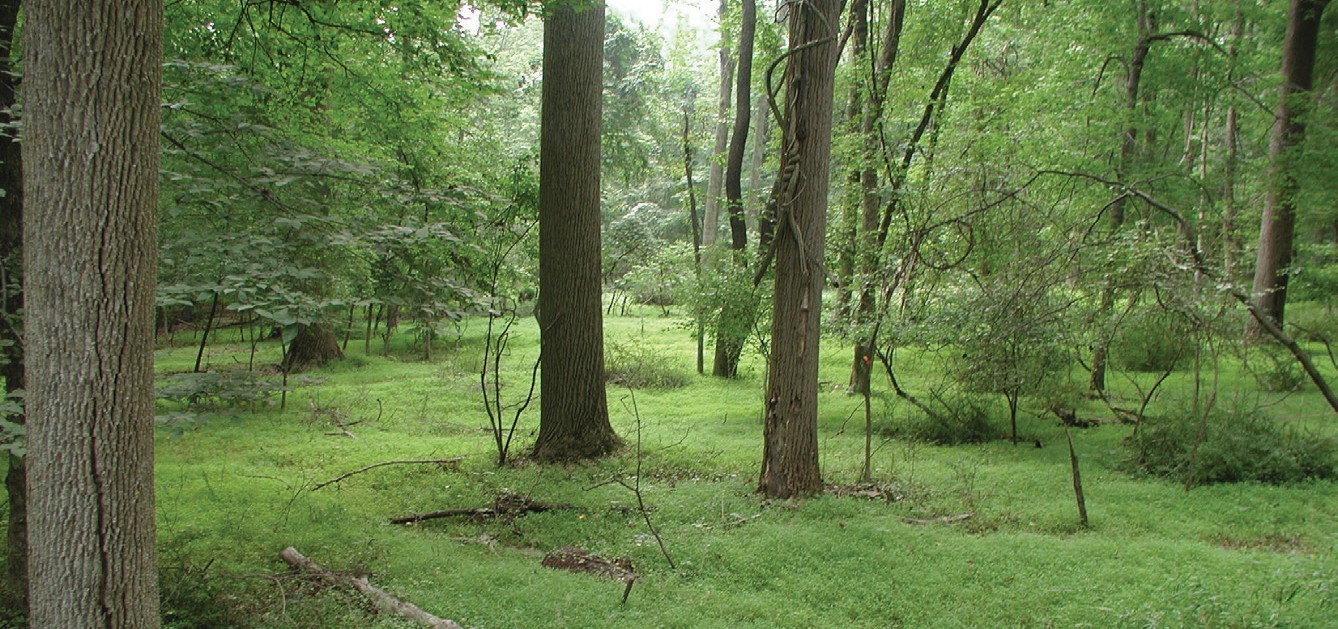
Air Dry: Plant development stage – Prior to flowering
Pull plants and leave with roots exposed to dry out. Leave on site. Check site in future years for re-sprouting plants.
Bag and dispose: Plant development stage – During or after flowering
Do not compost. Bag all material and allow to rot in sunny location for several weeks, then dispose of in regular trash to be landfilled or incinerated. Note: This is not an appropriate method to dispose of grass clippings created from mowing regular lawns. Grass clippings may not be disposed of in solid waste streams to go to landfills, as this would be a violation of CGS Sec. 22a-208v. This method should only be used to dispose of invasive grasses listed on the Connecticut Invasive Plant List if off- site disposal is needed after the plants have been pulled or removed from an area.
Notes:
Special care should be taken when disposing of rhizomatous species such as those listed to the right.
Plants that spread readily from root fragments or other plant parts should be disposed of in a way that will not allow the material to continue to grow and spread, including:
Scientific Name: Butomus umbellatus
Common Name: Flowering Rush
Reproductive method: rhizomes*
Scientific Name: Carex kobomugi
Common Name: Japanese sedge
Reproductive method: rhizomes*
Scientific Name: Glyceria maxima
Common Name: Reed mannagrass
Reproductive method: rhizomes*
Scientific Name: Iris pseudacorus
Common Name: Yellow flag iris
Reproductive method: rhizomes*
Scientific Name: Miscanthus sinensis
Common Name: Eulalia
Reproductive method: rhizomes*
Scientific Name: Phragmites australis
Common Name: Phragmites/Common reed
Reproductive method: rhizomes*
Scientific Name: Poa compressa
Common Name: Canada bluegrass
Reproductive method: rhizomes*
*rhizome=underground creeping stem
Acknowledgements:
This document is based on several previously existing works, particularly a non-native plant disposal document from the University of New Hampshire Cooperative Extension (January 2010), a NH DOT Best Management Practices document (2008), and an aquatic plant disposal document from the Invasive Plant Atlas of New England (2002). Special thanks to Les Mehrhoff (IPANE), Donna Ellis (UConn), K.C. Alexander, Chuck Lee, Tim Marsh, Nancy Murray and Brad Robinson (DEEP), Logan Senack, and the CT Invasive Plants Council for providing feedback and information for this document.
For more information about invasive plants, visit cipwg.uconn.edu or ct.gov/deep (search “invasive species”).

